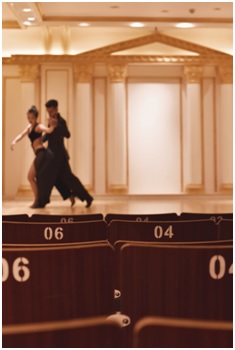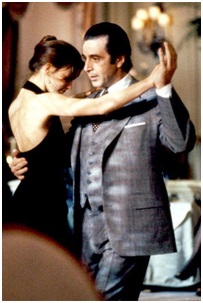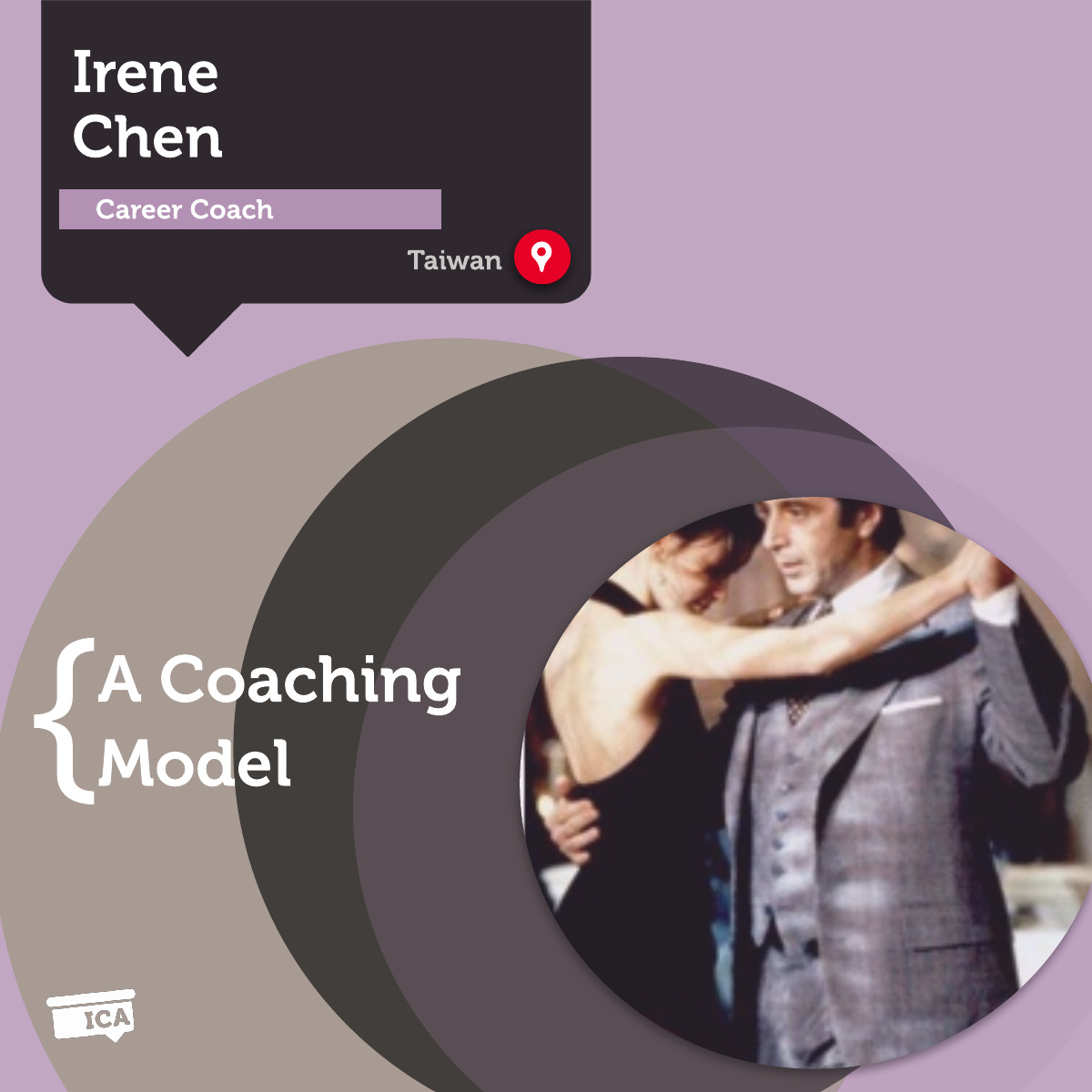A Coaching Model By Irene Chen, Career Coach, TAIWAN
 What Is Ballroom Dance?
What Is Ballroom Dance?
When it comes to the term, 「Coaching Model」, which strikes me the first is “What the acronym I need to generate & work on?” Consequently, before I can get started, I had already gotten stuck. Here I am, falling into the trap I set up for myself, for I firmly believe I “must” follow a pattern or “module” so I can accomplish the work. Similarly, we often convince ourselves that with a perfect client, applying standard procedures and then a successful coaching session will be guaranteed.
Is it that simple & straightforward? If you do believe so, then there’s one thing overly underestimated, which is people, who have thoughts, emotions, feelings and, they change their minds from time to time. Therefore, here comes the second strike to me, coaching is not something about procedures & patterns, on contrast, coaching is a flow, for me, just like the ballroom dancing, they flow on the dance floor, following with each other’s steps with the rhythm, and most interestingly, it takes 2 to dance so much alike coaching. And here it is, my coaching model, ballroom dance, not an acronym, but a conceptual model, resonated with me the most.
What is Ballroom dance? According to Wikipedia, “Ballroom dance is a set of partner dances, may refer, at its widest definition, to almost any recreational dance with a partner.”(Wikipedia) Other than “Ballroom Dance”, another keyword that drives my attention is “partner”. As far as I remember, since day 1 of the ICA journey, I have been hearing the phrase “coaching is a partnership”, which involves one coach and one client and the success depends on both of them. Isn’t it just like ballroom dancing? Coaching is a partnership, there must be mutual trust and a sense of equality. (Linda David) Very much like dancing, you need to trust your partner before you can perform a great dance.
Ballroom Dance 3 Key Elements, Rhythm, Passion/Emotion, and Practice
A great ballroom dance requires 3 key elements, rhythm, passion/emotion, and practice. How would they have been resonated and demonstrated in coaching?
- Rhythm is the soul of dancing, you feel the music, flow with that and immerse yourselves within the feelings& emotions driven by the music. “Ballroom dancing is a partner dance where couples, using step-patterns, move rhythmically, expressing the characteristics of music.” (A dance to remember) In coaching, different clients possess their rhythms, as a coach, you need to learn to listen to that and follow with it, that would make clients feel you are moving with them. For instance, there would-be clients who are visual-oriented, where pictures and drawing are better ways to help them express and “talk”. On the other hand, some clients are verbal and articulative, deep listening without interruption would be a more appropriate method for them. Of course, many others. It’s not just about clients’ type and personality, but how coaches interact with them, or, to say, “dance” with them. Move along with your clients with the rhythms they feel the most comfortable with.
- 2. Passion/emotion is what it takes to transform dance into a vivid performance. Like the tango, it is a dramatic dance and is widely popular in the world, why? “It is characterized by sharp, staccato movements and a passionate attitude.” (Dance lessons, tango) Given dancing involves complicated skills and techniques, without passion or emotion, making those great skills become precise robotic steps and moves, not able to express the affections. As a coach, are we able to feel the passion or emotion of our clients? I would say yes. Because empathy is crucial for coaching if you can’t feel for your clients, how are you going to make them build trust in you? The only thing to bear in mind is to feel for them but detach from the story. Like Tango, for it is such a passionate dance, during the performance, it coins the fantasy that dancers were lovers, they were so deeply in love with each other. (Well, in some cases, dancers are also couples) The truth is, they are professional dancers and partners, not lovers. It’s the steps, moves, music, and passion creating the ambiance of falling in love.
- Practice makes perfection. This old saying could almost apply to all, to dance, to coaching. For those professional dancers, it’s simple and basic to have a daily routine as 8-10 hours of practice and this routine could get even more intense before competitions. For me, practice doesn’t only make perfection, it also helps transform and internalize it as part of you, it’s more than being perfect, but being natural, being who you truly are. That reminded me of so many practicing hours during the coaching journey, the path to apply for credentials, and the pursuit of a professional coach, it’s not only to fulfill the hours requested by ICF but through these hours to shape and demonstrate what a coach you want to be. What marks the difference would be, for dancers, they get to practice with the same partners (for most cases), for coaches, you still have partners, while you are will have the luxury that your partners would vary with a wide range, which would bring the diversity and the flexibility to your coaching journey.

When I was writing this coaching model, visualizing those dances and moves, a picture just arose, the famous tango scene in the movie, “Scent of a Woman, and here I would like to quote what Colonel Frank said when he invited the lady for a tango dance in the restaurant,
No mistakes in the tango, not like life. It’s simple. That’s what makes the tango so great. If you make a mistake, get all tangled up, just tango on. (Scent of a Woman, 1992)
Ballroom Dance as Coaching Just Enjoy the Flow and Feel the Rhythm
As many veterans would share, coaching is rather an art, not a science. Like dancing, of course, you can learn to master that by memorizing all steps and patterns but you will lose the chance to enjoy the flow and feel the rhythm, for dancing is an art, not a technique. In coaching, it is up to your choice to search and follow the protocol and you may call this a perfect coaching session. Just want to circle back to them what I began within this article, coaching is a flow, you will move with your clients, or partners, when partners vary, you need to switch your steps and movements accordingly, and sometimes, to improvise even. That’s what makes coaching so profound and exciting, for coaches and clients. As said in the movie, “if you get all tangled up, just tango on.” May we all tango on.
Learn How to Create Your Own Coaching Model
Your Coaching Model reflects your values,
philosophies and beliefs and must communicate who you will coach
and the problems you will solve. Read more about creating your coaching model
References
What is ballroom dancing? Wikipedia
Coaching is a partnership, Linda David
A dance to remember
Dance lessons, tango
Scent of a Woman, 1992
